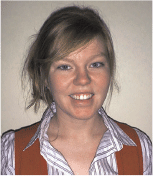Stratigraphy of the Birdrong: an integrated approach
J. Trainor A , J. Goodall B and K. Amos AA Australian School of Petroleum, The University of Adelaide.
B Morgan-Goodall Palaeo Associates.
The APPEA Journal 52(2) 684-684 https://doi.org/10.1071/AJ11098
Published: 2012
Abstract
A detailed study of the Early Cretaceous Birdrong Sequence (S. areolata–P. burgeri) has been undertaken in the East Spar and Woollybutt fields, which lie in the northern end of the Barrow Delta complex in the Barrow Sub-basin, Northern Carnarvon Basin. This project integrates palynological, sedimentological, and seismic stratigraphic interpretations to progress our understanding of the way in which the Barrow Delta evolved. The results will help develop remaining hydrocarbon prospectivity in the northern Barrow area.
Palynological analysis within the Helby, Morgan, and Partridge (2004) zonation scheme for the North West Shelf has enabled the identification of several significant biostratigraphic events, which have allowed further subdivision of the existing broad palynological zones. These palynological events represent influxes of specific dinoflagellate cyst taxa that may be tied to key stratal surfaces. These surfaces include transgressive ravinement surfaces, sequence boundaries and flooding surfaces.
The palynological and sedimentological data, when combined, indicate a strong facies relationship between specific taxa and interpreted depositional environment. Such taxa include Gagiella, freshwater and brackish algae, and fully marine dinoflagellate cysts including Kaiwaradinium scrutillinum, Systematophora areolata, Phoberocysta neocomica and Cribroperidinium muderongense.
The integration of sedimentology and palynology provides a powerful tool in interpreting depositional systems in shallow marine palaeoenvironments. Initial results indicate this may be used as a predictive tool for reservoir correlation and facies modelling. Key stratal surfaces identified through palynological and sedimentological study will be tested against 3D seismic to understand fully the stratigraphy of the study interval.

Jessica Trainor completed her BSc (Hons) at the University of Melbourne in 2009, looking at the palynology and sedimentology of Early Cretaceous deposits from the onshore Gippsland Basin. After graduating, she worked as a field technician and then geologist, with stints on a number of CSG rigs in the Darling Downs region of south Queensland. In 2010, she began a PhD at the University of Adelaide, where her work focuses on the palynology, sedimentology, and sequence stratigraphy of the northern Barrow Delta, offshore Western Australia. |

Jeffery Goodall completed his BSc (hons) at Kingston University, MSc (palynology) at Sheffield University, and PhD at University College London while employed by the Geochem Group, Chester, UK. From there, he moved to Ichron Ltd, Northwich, UK, to work on North Sea and international projects. In 1998, he migrated to Australia to join Santos for 12 years, working initially as a palynologist then sequence stratigrapher and finally exploration geologist, involved with the broad spectrum of exploration and development interests Santos has in Australia and overseas. In July 2010, he accepted an invitation from Roger Morgan to join Morgan Palaeo Associates and to become a partner in the company—one with a growing portfolio of coal, oil, and gas exploration and development projects. He has also maintained and built on his exploration geology experience with prospect generation and prospect review projects, presently focused primarily in Indonesia. |

Kathryn Amos is a lecturer at the Australian School of Petroleum (ASP), University of Adelaide. She was awarded a PhD (2004) from the University of East Anglia, UK, and a BSc (environmental sciences) (hons) (1999) from the same university. Her first sedimentologic interest was for turbidity currents, on which her PhD and a one-year post-doctoral at the University of Leeds were focused. An experience with dryland fluvial sedimentology during her PhD drew her to Australia in 2005, to hold research positions at UNSW@ADFA and then the ASP (2007). She took on leadership of the Lake Eyre Basin Analogues Research Group industry consortium in 2008, and moved into a lectureship position in 2010. She continues to conduct research on Lake Eyre Basin analogues, as well as other sedimentologic and stratigraphic investigation of modern and ancient deposits from fluvial, marginal marine, and deepwater environments. Member: AAPG, SEPM, IAS, GSA. |
References
Geoscience Australia (GA), 2011—Sedimentary environments in wave-dominated estuaries. Accessed 3 February 2012. http://www.ozcoasts.gov.au/conceptual_mods/geomorphic/wde/wde_facies.jsp.Hearty, D.J., and Battrick, M.A., 2002—Woollybutt 2001: a geoscience odyssey. In: Keep, M., and Moss, S. (eds.) The Sedimentary Basins of Western Australia 3. Perth, Australia: PESA, 551–76.
Helby, R., Morgan, R., and Partridge, A.D., 2004—Updated Jurassic-Early Cretaceous dinocyst zonation NWS Australia. Canberra, Australia: Geoscience Australia.
Tupper, N.P., Tadiar, E.F., Price, D.L., and Goodall, J.D.S. (2002). A revised depositional model for East Spar and its impact on field performance. APPEA Journal 42, 461–76.
Zaitland, B.A., Dalrymple, R.W., and Boyd, R., 1994—The stratigraphic organisation of incised-valley systems associated with relative sea-level changes. In: Dalrymple, R.W., Boyd, R., and Zaitlin, B.A. (eds.) Incised-Valley Systems: Origin and Sedimentary Sequences. Tulsa, Oklahoma: SEPM, 45–60.


